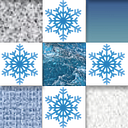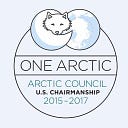WEEK 35: NEW YORK
Unmasking the Connections Between New York and the Arctic
By Dr. Margaret Blackman, professor emerita of Anthropology at The College of Brockport, SUNY and Mayor of Brockport, New York
Shorebirds in New York Harbor, Arctic plant life in NYC, and the venerable NYC based Explorers Club, founded by Arctic explorers in 1904, are just three of the many eclectic and historic connections the great state of New York has to the Arctic. Of particular note among today’s polar connections is the Arctic research generated at the expansive State University of New York system (SUNY).
Thirty years ago SUNY Binghamton’s Utqiagvik (pr. Ut-ki-AH-vik) archaeology project at Barrow, Alaska captured worldwide attention as its researchers, working with the local native elders and benefiting from their indigenous knowledge, sought to interpret material from the excavation of a pre-contact and early contact period village that was eroding from the sea bluffs. That material included a house catastrophically collapsed from an avalanche of sea ice overriding the shore. The house contained well preserved organic material and the frozen remains of five bodies, dubbed by archaeologists and the media, “the frozen family.”
In the small village of Anaktuvuk (pr. Uhn-uk-too-vuk) Pass, Alaska, in the roadless Brooks Range 250 miles southeast of Barrow and 250 miles northwest of Fairbanks, the native Nunamiut (pr. Noon-uh-mee-oot) Eskimos have been sharing their indigenous knowledge of the Arctic environment, its animal and plant life with North American scientists since the mid-1940s, several years before they settled in their present location. Pilot Sig Wein and the airline his Fairbanks family established, Wien Airlines, was the conduit that brought most of the early scientists to northern Alaska. At that time — and not unlike today — much of Alaska is only accessible by air, making airplanes an essential part of any plan for scientists conducting research in remote areas of the state.
Despite the close collaboration between scientists and the Nunamiut, the latter weren’t even counted in the U.S. census until 1950 when a determined census taker traveled by bush plane and dog team to reach them–not an easy task. At that time they were nomadic inland hunters of caribou, whose seasonal movements took them in an annual circuit of a few hundred miles, from the Arctic tundra south to the tree line and back. “Like the wolf we follow the caribou,” one elder reminisced about their pre-settled life.
As scientists, missionaries, teachers and others arrived in Alaska changes came to the Nunamiut, some at their behest. Like many indigenous peoples of the Arctic, they no longer live a nomadic lifestyle. By 1950 they were more or less settled in Anaktuvuk Pass, along a major migratory route of the caribou; there they managed to secure a post office in 1951, assuring the periodic delivery by bush airplane of goods and supplies.
By the time I, a cultural anthropologist at the College at Brockport SUNY, arrived in Anaktuvuk Pass in the fall of 1984 with a SUNY archaeologist and an archaeology graduate student to document native land use patterns in the new Gates of the Arctic National Park, Anaktuvuk Pass had been an incorporated second class city for 14 years; its 200+ residents enjoyed electricity and a state of the art K-12 school; villagers had television and some phone service, along with daily bush plane service, weather permitting. But at 80 miles from the nearest road cradled in the gray shale of the Brooks Range Mountains, Anaktuvuk was, and is still, remote.
As a resident of western New York, tied to the academic calendar of a college, I looked forward to summers in Anaktuvuk Pass. A project to do in a limited time frame, yes, but the unending daylight, moderate temperatures, slower pace of life and the sere beauty of the Arctic tundra in summer green were a welcome relief from the demands of academic life the rest of the year.
I have returned to Anaktuvk Pass many times since that first trip, most recently funded by a National Science Foundation Arctic Social Sciences grant (2001–2009)through the College at Brockport, SUNY, to study the relationship between indigenous knowledge, art, and the natural world. In layman’s terms, I came north to talk to the makers of the unique caribou skin masks that are the signature piece of craftsmanship and art from Anaktuvuk Pass and to study these works of art.
The first handsewn masks were created in 1951 by two Nunamiut trappers who were inspired by the Halloween masks one of them had seen in a Fairbanks drugstore. Out on their trapline, they killed a caribou. Thinking it would be fun to make a couple of masks from its hide to wear at the Eskimo dances during the Christmas holidays, they set to work handsewing the hide into two masks. They donned their creations a few weeks later at the dances to the great surprise and amusement of the villagers. That masked dance performance was a singular event and the masks eventually passed into the hands of collectors in Fairbanks.
In 1956 villager Justus Mekiana took the idea a step farther to create a marketable craft. He developed a technique, to create masks by applying wet caribou skins to carved wooden face molds. Created far more quickly than the handsewn versions, the masks were marketed to tourists and by the late 1960s provided the majority of cash income for most village families. Today, skin masks fill Anaktuvuk’s museum gift shop, hang for sale in the local store (there’s only one), and find their way south to shops elsewhere in Alaska and beyond. So emblematic are they of Anaktuvuk that the mask faces have been silkscreened onto T-shirts, etched in glass on the welcome screen at the local museum, and embossed on the letterhead of the local Nunamiut Corporation.
To create an Anaktuvuk mask, the artists must have an intimate knowledge of the caribou, from its migratory wanderings to the age, sex, and seasonal characteristics of its hide, to the preparation of the hide from the time they are removed from the animal to the time they are cut free of the wooden molds. The art form hinges not only on the knowledge and craftsmanship of its makers, but on the continued hunting of caribou. For now the place of hunting in the lives of Anaktuvuk people seems secure, and the Western Arctic Caribou Herd population on which the people depend is numerically stable.
Change in Anaktuvuk marched on through my numerous research seasons there. Waterlines and flush toilets were a welcome capital project at the turn of the millenium, but villagers made fewer masks when they had high paying wage jobs on the water project. Cellphone coverage reached Anaktuvuk Pass in 2010, and when the newly expanded museum opened the following year, villagers snapped photos of the exhibits with their cell phones and eagerly tried out the museum’s iPads that guided them through the exhibits.
Back in the fall of 1957 Justus Mekiana wrote a former schoolteacher to inquire about some masks she was selling for him, ending with: “Gee, lots of caribou passing us from north toward south. Gee thousands thousands of them. I have no more to tell you only caribou.” Fall 2016: villagers still talk excitedly about the caribou migration, only now they share their comments with their hundreds of friends on Facebook.
Most Arctic research in New York today passes through the State University of New York’s four university centers — Albany, Buffalo, Binghamton, and Stony Brook. SUNY researchers come from diverse disciplines — atmospheric sciences, health, geography, anthropology, geology, biological sciences, marine and atmospheric sciences. From study of the prehistoric human reaction to climate change to the adaptation of Arctic communities to current climate change, from the study of the pre-industrial Arctic atmosphere preserved in sea ice cores to the assessment of the impact of black carbon particles in today’s Arctic atmosphere on global climate change, the State of New York continues to leave its mark on Arctic research, much as the Arctic has left its impact on those of us who conduct research there.
About the Author: Dr. Margaret Blackman is professor emerita of Anthropology at The College of Brockport, SUNY. She is the author of Upside Down: Seasons Among the Nunamiut (2004), and is currently completing a collection of essays, “Faces of the Nunamiut” on Anaktuvuk Pass mask making. Since 2013 she has been the mayor of Brockport, NY.

